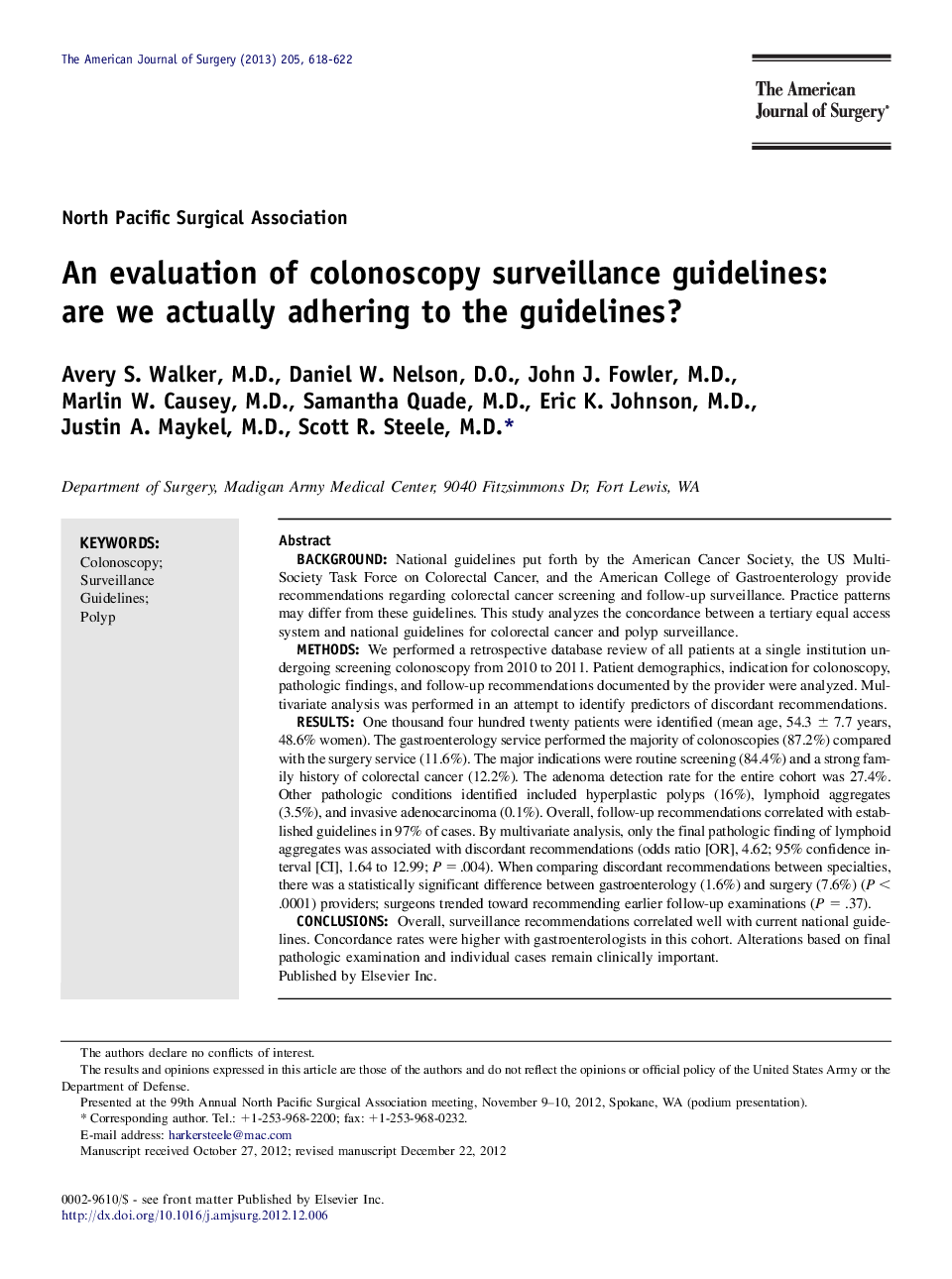| Article ID | Journal | Published Year | Pages | File Type |
|---|---|---|---|---|
| 4279280 | The American Journal of Surgery | 2013 | 5 Pages |
BackgroundNational guidelines put forth by the American Cancer Society, the US Multi-Society Task Force on Colorectal Cancer, and the American College of Gastroenterology provide recommendations regarding colorectal cancer screening and follow-up surveillance. Practice patterns may differ from these guidelines. This study analyzes the concordance between a tertiary equal access system and national guidelines for colorectal cancer and polyp surveillance.MethodsWe performed a retrospective database review of all patients at a single institution undergoing screening colonoscopy from 2010 to 2011. Patient demographics, indication for colonoscopy, pathologic findings, and follow-up recommendations documented by the provider were analyzed. Multivariate analysis was performed in an attempt to identify predictors of discordant recommendations.ResultsOne thousand four hundred twenty patients were identified (mean age, 54.3 ± 7.7 years, 48.6% women). The gastroenterology service performed the majority of colonoscopies (87.2%) compared with the surgery service (11.6%). The major indications were routine screening (84.4%) and a strong family history of colorectal cancer (12.2%). The adenoma detection rate for the entire cohort was 27.4%. Other pathologic conditions identified included hyperplastic polyps (16%), lymphoid aggregates (3.5%), and invasive adenocarcinoma (0.1%). Overall, follow-up recommendations correlated with established guidelines in 97% of cases. By multivariate analysis, only the final pathologic finding of lymphoid aggregates was associated with discordant recommendations (odds ratio [OR], 4.62; 95% confidence interval [CI], 1.64 to 12.99; P = .004). When comparing discordant recommendations between specialties, there was a statistically significant difference between gastroenterology (1.6%) and surgery (7.6%) (P < .0001) providers; surgeons trended toward recommending earlier follow-up examinations (P = .37).ConclusionsOverall, surveillance recommendations correlated well with current national guidelines. Concordance rates were higher with gastroenterologists in this cohort. Alterations based on final pathologic examination and individual cases remain clinically important.
